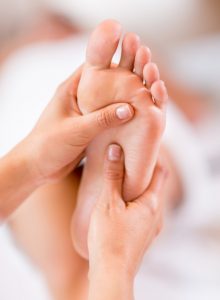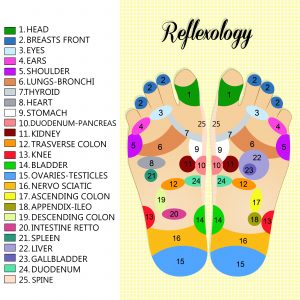Perfectly Pampered Cayman is now offering Reflexology!
We are pleased to let you know that we will now be taking bookings for Reflexology.
You can choose from a 30-minute feet treatment for $65 KYD or a 60-minute feet, hand, and head treatment for $95 KYD.
We have put together some information below on Reflexology for you to read. If you have any questions please do not hesitate to contact us.
What is Reflexology?
Reflexology is a form of bodywork that involves applying pressure to the hands and feet to produce changes in pain and other benefits elsewhere in the body.
How Does Reflexology Work?
The underlying theory behind reflexology is that there are certain points or “reflex areas” on the feet and hands that are connected energetically to specific organs and body parts through energy channels in the body. By applying pressure to reflex areas, a reflexologist is said to remove energy blockages and promote health in the related body area.
- The tips of the toes reflect the head
- The heart and chest are around the ball of the foot
- The liver, pancreas, and kidney are in the arch of the foot
- Low back and intestines are towards the heel
Although the roots of reflexology go back to ancient Egypt and China, William H. Fitzgerald, an ear, nose, and throat doctor, introduced this concept of “zone therapy” in 1915. American physiotherapist Eunice Ingram further developed the zone theory in the 1930’s into what is known as modern reflexology.
According to reflexologists, pressure on the reflex points also helps to balance the nervous system and stimulates the release of endorphins that help to reduce pain and stress.
Why Do People Get Reflexology?
- Stress and stress-related conditions
- Tension headaches and migraines
- Digestive disorders
- Arthritis
- Insomnia
- Hormonal imbalances
- Sports injuries
- Menstrual disorders, such as premenstrual syndrome (PMS)
- Digestive problems, such as constipation
- Multiple sclerosis
- Back pain
What Is a Typical Session Like?
A typical treatment is 30 to 60 minutes long and begins with a health history form and consultation about your health and lifestyle. The reflexologist will use the information to customize the therapy.
You may then be asked to remove your shoes and socks and sit comfortably in a reclining chair or on a massage table.
The reflexologist will assess the feet and stimulate various points to identify areas of tenderness or tension. Brisk movements and massage may be used to warm the hands and feet. Finger or thumb pressure is then applied to the foot using reflexology techniques.
Lotion or oil may be used, and the reflexologist may also use instruments like balls, brushes, and dowels.
Reflexology vs. a Foot Massage
While a foot massage may feel the same as a reflexology treatment, a reflexologist will work on areas to promote a healing response in the corresponding organs. A massage therapist giving a foot massage will manipulate muscles and other soft tissues to improve circulation, relieve pain, and heal injuries in the area or to induce overall relaxation.
What Does Reflexology Feel Like?
Most people find reflexology, for the most part, to be very relaxing.
Reflexology shouldn’t be painful. If you feel discomfort, be sure to tell the reflexologist. He or she should work within your comfort zone.
Some areas may be tender or sore, and the reflexologist may spend extra time on these points. The soreness should decrease with pressure.
If you’re ticklish, not to worry. The reflexologist applies firm pressure to the feet.
How Will I Feel Afterward?
Most people feel calm and relaxed after a reflexology session. Occasionally, some people feel nausea, sleepiness, and mood swings.
Possible Side Effects and Safety
Be sure to give the reflexologist a complete and accurate health history. It’s always a good idea to consult your primary care provider before trying anything new, including reflexology.
If you have foot ulcers, recent injury, foot or ankle wounds, gout, or a cardiovascular condition, reflexology may not be appropriate or safe. Reflexology may also not be right for people with diabetes, osteoarthritis (affecting the ankle or foot), circulatory problems, active infections, gallstones, kidney stones, or certain types of cancer.
Pregnant women should avoid reflexology.
Source: https://www.verywellhealth.com/reflexology-what-you-need-to-know-89995







